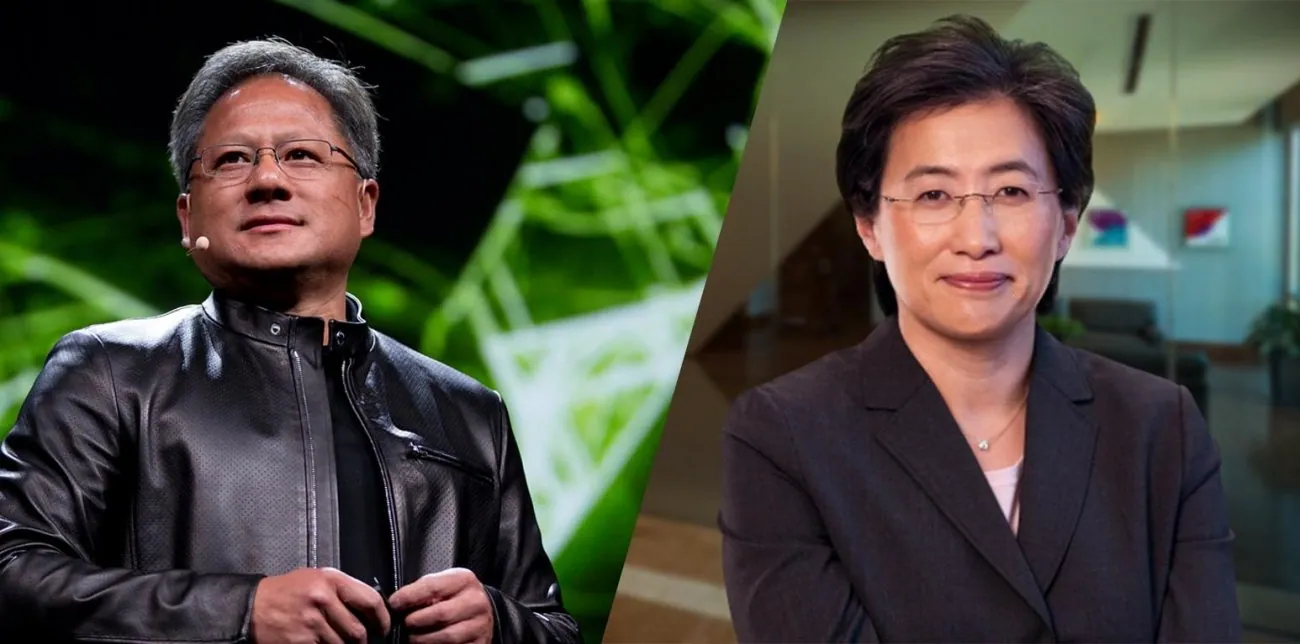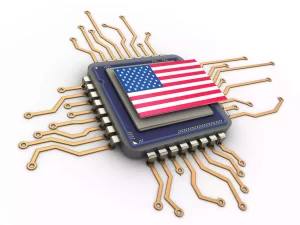Introduction:
In an industry-altering move, Meta, OpenAI, and Microsoft have embarked on a transformative journey by endorsing AMD’s cutting-edge AI chip, the Instinct MI300X. This strategic alliance signifies a departure from the norm, signaling a collective pursuit of alternatives to Nvidia’s costly graphics processors, traditionally pivotal in the realm of AI development.
AMD’s visionary CEO, Lisa Su, foresees a future where the AI chip market surges past $400 billion by 2027, with AMD poised to capture a significant share of this burgeoning industry.
Meta and Microsoft, two tech giants known for their cutting-edge innovation, have announced their intention to purchase AMD’s new Instinct MI300X AI chip. This move signifies a potential shift in the AI chip landscape, where Nvidia has long dominated the market. But is this a game-changer or just hype? Let’s delve into the details.
Follow us on Linkedin for everything around Semiconductors & AI
AMD’s MI300X: Reshaping AI’s Tomorrow
Meta, OpenAI, and Microsoft unite behind AMD’s MI300X, pivoting away from Nvidia. This seismic shift signals an impending AI revolution, where cost-efficiency, distinctive features, and user-centric performance redefine the landscape.
Join us as AMD challenges Nvidia’s stronghold, shaping a dynamic future for AI technology.
Industry Paradigm Shift:
Meta, OpenAI, and Microsoft’s unwavering commitment to AMD’s MI300X marks a seismic shift, symbolizing a departure from the conventional reliance on Nvidia’s graphics processors in the ever-evolving landscape of AI innovation and deployment.
Cost-Efficient AI Revolution:
The adoption of MI300X signifies not just an evolution but a potential revolution in AI development, offering cost-effective solutions. The chip’s effectiveness and economic viability could exert substantial competitive pressure, challenging Nvidia’s continual growth in AI chip sales.
AMD’s Audacious Vision for the AI Market:
Lisa Su’s audacious projection of a $400 billion-plus AI chip market by 2027 underscores AMD’s unwavering determination to play a pivotal role in shaping the future of AI technology. This ambition puts AMD in direct contention with Nvidia’s current market stronghold.
MI300X’s Distinctive Features:
Built on a revolutionary architecture, the MI300X boasts standout features, including a substantial 192GB of cutting-edge HBM3 memory. This high-performance memory not only facilitates faster data transfer but also accommodates more extensive and intricate AI models, setting a new benchmark in processing capabilities.
Performance Benchmarking and User Experience:
Lisa Su’s direct comparison of MI300X with Nvidia’s H100 emphasizes not just superior performance but the chip’s capability to handle complex AI model queries with unparalleled efficiency. This directly translates into an elevated user experience, a crucial factor in the competitive AI landscape.
Navigating Adoption Challenges:
While MI300X presents a compelling alternative, the challenge lies in convincing companies entrenched in Nvidia’s ecosystem to invest time and resources in adopting a new GPU supplier. AMD addresses this challenge head-on by enhancing its ROCm software suite, directly competing with Nvidia’s industry standard CUDA software.
Pricing Dynamics and Cost Competitiveness:
The success of MI300X hinges on more than just performance—it’s about pricing competitiveness. With Nvidia’s chips commanding steep prices around $40,000, Lisa Su emphasizes that MI300X must not only offer a more affordable initial purchase but also boast lower operational expenses to sway customers away from Nvidia.
Embraced by Tech Titans:
The vote of confidence from industry giants is resounding. Meta, Microsoft, and Oracle have not merely endorsed MI300X but have committed to seamlessly integrating it into their operations. Meta’s plans to utilize MI300X GPUs for AI inference workloads, Microsoft’s integration into Azure, and Oracle’s leverage in cloud services highlight the diverse applications of these cutting-edge chips.
Market Projections and Elevated Expectations:
While AMD projects a seemingly modest $2 billion in total data center GPU revenue for MI300X in 2024, the anticipated $400 billion AI GPU market over the next four years reflects the industry’s lofty expectations. This underscores the significance of high-end AI chips and positions AMD as a formidable player in this rapidly evolving landscape.
Read More: Singapore Data Center Boom is Catalyst for Nvidia’s Staggering 15% Revenue – techovedas
What does this mean for the future?
This move could have significant implications for the AI chip market:
- Increased competition: AMD’s entry into the high-performance AI chip market could lead to increased competition and innovation, ultimately benefitting users with more options and potentially lower prices.
- Nvidia’s dominance challenged: Nvidia’s long-held dominance in the AI chip market could be challenged. This could lead to a more competitive landscape and ultimately benefit users with greater diversity and choice.
- Open-Source Opportunities: AMD’s commitment to open-source software could attract developers and encourage further innovation in the AI chip space.
Is this just hype?
While the potential is promising, it’s still early to say definitively whether this is a game-changer. Some factors need to be considered:
- Limited Availability: Currently, the MI300X is only available in limited quantities. It might take some time before it becomes readily available to all developers and companies.
- Software Ecosystem Maturity: While AMD is making strides with its ROCm software suite, it still needs to catch up with the maturity and widespread adoption of Nvidia’s CUDA platform.
- Nvidia’s Response: Nvidia is unlikely to sit idly by. They can be expected to respond with competitive pricing and further advancements in their AI chip technology.
Overall, Meta and Microsoft’s decision to purchase AMD’s AI chip is a significant development in the AI chip market. While it’s still early to predict the long-term impact, it has the potential to increase competition, drive innovation, and ultimately benefit users with more choices and potentially lower costs.
Conclusion:
The collective decision by Meta, Microsoft, and OpenAI to embrace AMD’s MI300X heralds not just a new chapter but a revolution in AI chip technology. As AMD gears up to challenge Nvidia’s established dominance, MI300X’s potential for enhanced performance, substantial memory capacity, and competitive pricing introduces a dynamic shift in the landscape of AI development. The ensuing competition promises not only innovation and affordability but a transformative impact on the future of artificial intelligence, shaping a narrative where AMD emerges as a catalyst for industry-wide change.








